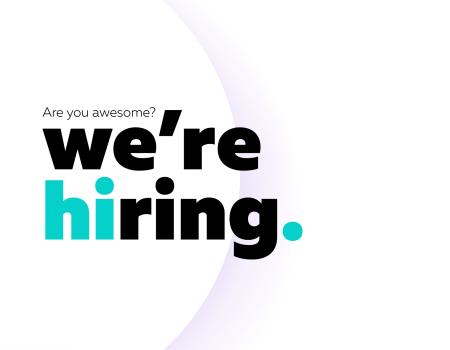Wait, what? Drupal extends D7 end of life to 2022, but stands firm on 2021 for D8
I feel like owners of Drupal 7 sites just got a "Get out of jail free" card because the Drupal community just announced that it will continue to provide support for Drupal 7 until November 2022 instead of the latest deadline, which was November 2021. Previously, the deadline was November 2020, so this is the second time the milestone has been moved.
So what does this mean? What is the impact?
This affects people and organizations that operate Drupal 7, Drupal 8, and Drupal 9 sites. It gives owners of Drupal 7 sites more time to plan, to budget, and to raise money to migrate Drupal 7 in a more methodical way with less pressure, stress, and panic. This deadline had caused quite a bit of angst and panic among owners of D7 sites.
The feedback we were hearing is that they simply didn't have the budget for this. Some big sites could cost as much as $2-3 million dollars to migrate out of Drupal 7. Even some of the largest organizations can't come up with that kind of money on short notice. There are budget cycles, some organizations need 12, 18, and even 24 months to justify and approve this kind of additional expense.
Other feedback we received from owners of D7 sites is that the timing just wasn't good. Between the stop and go over government budgets, government spending, COVID-19, coronavirus, sudden collapse of a booming economy and political strife across the world, organizations just couldn't support the time and effort required to perform such a major technical migration at this time.
Finally, some D7 owners felt a bit bitter about being forced into this position. Websites running on WordPress, for example, have a more automated, seamless, and less disruptive upgrade process. Entire websites powered by WordPress v4.X didn't have to necessarily rebuild the entire site when upgrading to WordPress v5.x. So, some D7 owners were feeling more than a bit annoyed.
The deadline has been extended, now what?
For big Drupal 7 sites, it could take a year to a year and a half to migrate out of D7. Given that the deadline was November 2021, which is about exactly a year and a half from now, any organization running a big D7 site had to be working on the migration right now! If you hadn't started by now, then you probably weren't going to make it in time, unless you threw dozens of people on the project, which doesn't necessarily make the project go faster. So, what this means is that organizations have an additional year to plan, and budget.
If you have a large D7 site, like a really big .gov site, then you have until late winter to early spring 2021 (January - April, 2021) to get started and hit the ground running on the D7 migration. If you have a smaller site, then you have probably two years to plan, budget, and get started.
Having said that, owners of D7 sites should not lose their sense of urgency. Why? Because Drupal is an open source software, which means it depends on the community of Drupal developers to contribute code, fixes, and patches to all the independent contrib modules that extend the functionality of Drupal. Most Drupal developers are focusing their time, attention, and mental energy on D8. And now that D9 just came out - about 2 weeks ago - many Drupal developers are focusing on D9.
Contributing, patching, fixing, and supporting D7 modules is the last priority for most Drupal developers. They are not even thinking about it, unless they are running a D7 site and have no choice.
So, the more time that goes by, the more D7 contrib modules will be neglected, unsupported, and vulnerable - particularly to security risks. This will get worse as time goes by.
Why was Drupal 8 deadline not extended?
To the outsider, it may seem bizarre that the deadline for getting out of Drupal 7 was extended to November 2022 but the deadline for getting out of Drupal 8 remains November 2021. That doesn't make sense. Why can people stay in D7 but can't stay in D8?
Two reasons. First, Drupal 8 was built in Symfony 3 which has its own end of life in November 2021. So, the Drupal community cannot support D8 beyond November 2021 because the Symfony community will discontinue support of Symfony 3. But, Drupal 7 does not have this same dependency.
Second, it is extraordinarily resource intensive and consuming to support legacy products and apps. It is hard enough to build and grow one version of software while supporting a legacy version. Extraordinarily hard and expensive to support two legacy versions. It just gets too complicated.
So, what is the migration strategy? D7>D9?
Generally speaking, owners of D7 sites have a bit of a stay. You can stay where you are for now. Or, you can migrate to D8, although that doesn't make a lot of sense (or cents). Probably, it would be better to migrate directly to D9 unless you have already started the D7>D8 process. If you are midflight and a good way into your D8 migration, then you should finish that process. Wrap it up. Once you get into D8 then plan 2-3 more sprints and upgrade (not migrate) from D8 to D9.
If you have not started the D7>D8 process then you have some choices:
- Stay where you, stay in D7 for now
- Migrate directly from D7 to D9
- Consider migrating to WP or WP VIP instead
- Consider migrating to another CMS altogether - yes, Joomla is sill alive
- Consider getting out of a CMS altogether - perhaps Symfony or Django
If you have having trouble with this conundrum, give us a call, perhaps we can help.



